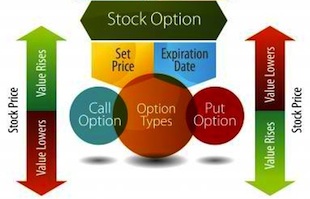 Sometimes bad things happen to good stocks. And when this happens, good stock trades can quickly become broken stock trades. Just like a rising tide lifts all boats, when the tide goes out, the boats go lower. Massive market sell-offs show no mercy, are not selective, and take no prisoners.
Sometimes bad things happen to good stocks. And when this happens, good stock trades can quickly become broken stock trades. Just like a rising tide lifts all boats, when the tide goes out, the boats go lower. Massive market sell-offs show no mercy, are not selective, and take no prisoners.
What can you do when a stock you bought (and like) heads lower? You can: A) do nothing. You bought it for the long term. B) sell it and take the loss. C) buy more at a lower price (hey, if you liked it at 20 you gotta love it at 15, right?) D) use options strategies to lessen or mitigate your loss from the broken stock trade.
There’s nothing wrong with A. Particularly if you are comfortable with its dividend yield or simply believe that the stock is oversold. There’s nothing wrong with B either, provided you did not let the loss run away from you. Some of the best trades I’ve ever done involved taking a small loss before it turned catastrophic. C is stupid. I wouldn’t advise reinforcing failure with a “double down”. In Europe we called this the “Monte Carlo Fallacy”. If the roulette wheel is red 25 times in a row and you keep betting with more money on black each time you’re likely to go broke before black comes up.
So, let’s look at D, using options. Before I begin, no strategy will help you if the stock goes to zero. There was no way to repair an Enron position, for instance. But, fortunately, that doesn’t happen very often. Let’s look at a realistic repair strategy for a broken stock trade. It simply involves doing a 1:2 vertical call spread for a credit.
We’ll use IBM as an example. At this writing (October 8, 9:40 CDT), IBM is making a new 52 week low at 180.22. And let’s say you own 100 shares that you bought at 195. You can buy 1 November 190 call at 1.40 and sell 2 195 calls at .85. If IBM never gets back to 190 you make the .30 credit and can do the trade again in a different month. If IBM makes it back to 195 you break even on your stock and make 5.30 on your options. Remember, though, that above 195 your net short single call means that your stock is called away and that caps your upside profit.
What is also advantageous about this trade is that it costs you nothing to put on. You are short 2 calls but against that are long 100 shares and 1 call. So, there is no margin.
Another possibility uses puts. You can bite the bullet and take a loss on your IBM (maybe that loss can be a tax offset) and at the same time you can sell the November 170 put at 2.10. If IBM stays above 170, you collect the 2.10 to lessen your loss. And if IBM goes below 170, you’re back in the stock at an effective purchase price of 167.90.
These are good ways to lessen the pain of a losing trade or investment. Yet another tribute to the multi-faceted uses of exchange traded options. Thank you for reading. Note that you can catch me every day on The Liss Report.
Twitter: @RandallLiss
No positions in any of the mentioned securities at the time of publication. Any opinions expressed herein are solely those of the author, and do not in any way represent the views or opinions of any other person or entity.








